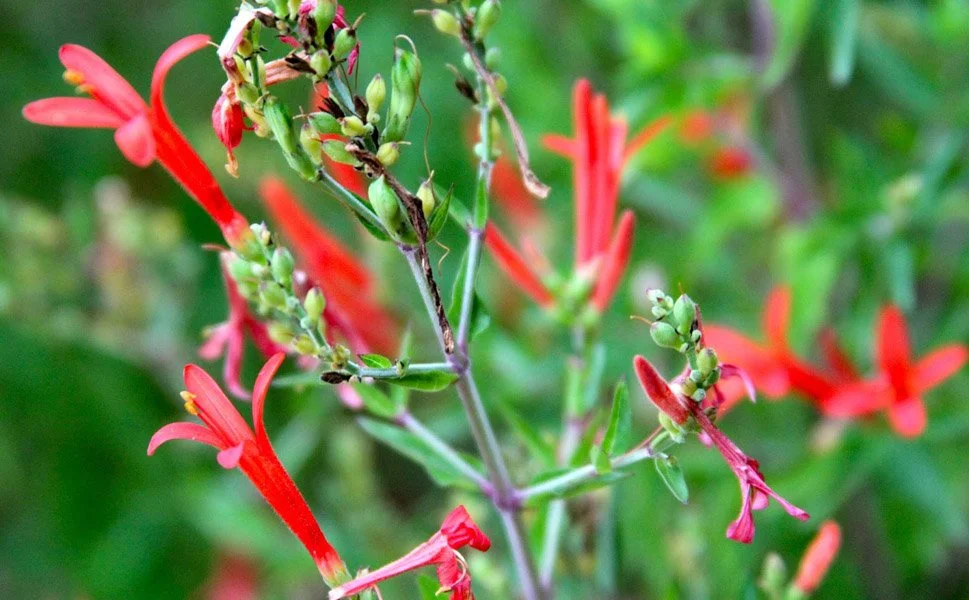Species Profile: Flame Acanthus
Common Name: Flame Acanthus (also known as Hummingbird Bush or Wright’s Desert Honeysuckle)
Scientific Name: Anisacanthus quadrifidus var. wrightii
Location: Native to rocky limestone hills, canyons, and dry brushlands of Central and West Texas. Frequently planted in xeriscapes and pollinator gardens.
Mating Habits: As a flowering shrub, it reproduces via pollination and produces seed capsules. Flowers are pollinated mainly by hummingbirds, but also by butterflies and long-tongued bees.
Seasonal Habits / Bloom Time: Blooms from late spring through fall (May to October), especially after rains. Its extended flowering season makes it a dependable nectar source.
Ecological Relevance: A magnet for hummingbirds, particularly the Black-chinned and Rufous Hummingbirds during migration. Provides cover and occasional nesting habitat for small birds and insects.
Interesting Facts:
Produces tubular, bright red-orange flowers ideal for hummingbird pollination.
Extremely drought-tolerant and heat-loving.
Can be pruned back hard in winter and rebounds quickly.
Native Wildlife Associations: Highly attractive to hummingbirds, butterflies, and native bees. Occasionally used by birds as a perching or nesting shrub.
Conservation Note: Perfect for dry, sunny landscapes and pollinator gardens. Supports hummingbird populations in arid environments and serves as a reliable nectar source through hot Texas summers.

